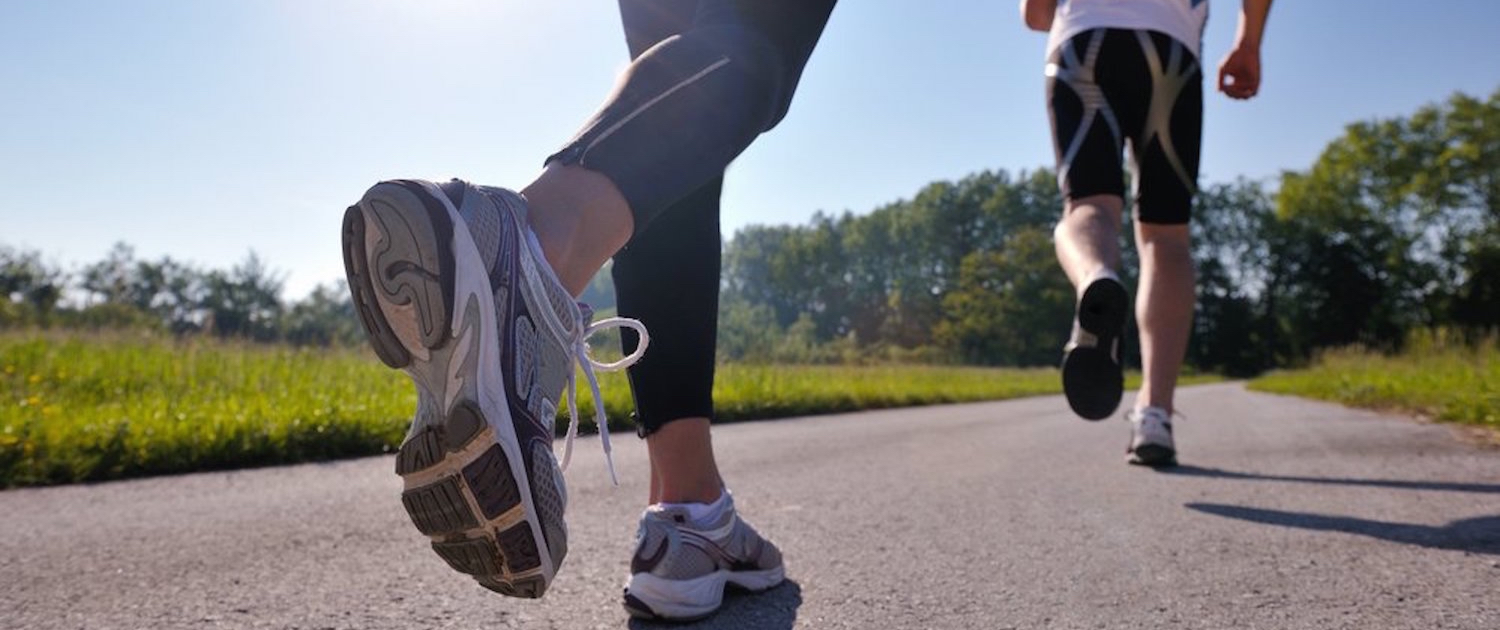You’re running on a beautiful, sunny day through the West Virginia roads and you feel pain in your foot. You think to yourself, “is this a running injury or just a few aches?”
At Mountainstate Orthopedic Associates, we believe you shouldn’t have to guess about your health. You should be able to detect the signs of an injury so that you can have it checked out by an orthopedic specialist. Continue reading to learn about the most common running injuries we see, and how to detect them, as well as how MOA can treat your running injuries.
COMMON RUNNING INJURIES
According to Statista, almost 60 million people participated in running and jogging in 2017. While running has many health benefits, it is associated with a high risk of injuries.
There are two types of running injuries:
- Acute injuries come on suddenly, such as broken bones or sprains.
- Chronic injuries happen when there is a repeated force of pressure being applied to the area. Chronic injuries can happen for many reasons, including the condition of your running shoes, transitioning from different terrains too suddenly and increasing amount of miles you run too quickly.
The most common acute and chronic running injuries are in the hip, knee, foot and ankle.
Hip Injuries Due to Running
The hip is a ball-and-socket joint that has two elements, the femoral head and the acetabulum, and is one of the largest weight-bearing joints in the body. Common injuries of the hip include muscle strain, tendinitis, IT band syndrome and muscle-tendon bursitis.
Tendinitis is a common injury in runners typically found in the knee; however, we have seen it in the hip as well. When the tendons become inflamed, it can cause pain around the joint. You may feel pain and stiffness in your hip, especially if you are running or flexing your hip.
IT band syndrome affects your iliotibial band, which is the connective tissue that stretches along the hip, knee and shinbone. When this band becomes tight due to overuse, you may feel pain and tenderness in the hip, knee as well as thigh area. When moving your hip, you may also hear a popping noise.
Bursitis is caused when the bursae, small jelly-like sacs place in various areas in the body like the hip, become inflamed. When these sacs become inflamed, you may feel a sharp, intense pain. As the pain develops, it may become more of a dull ache across the whole hip.
Knee Injuries Due to Running
40 percent of running injuries happen to the knee. Injuries could include patellofemoral pain syndrome (Runner’s Knee) and shin splints.
Runner’s Knee causes pain behind the kneecap, known as the patella, that can be caused by overuse, trauma to the kneecap, flat feet, fractures and improper warm-up sessions.
Shin splints, also known as medial tibial stress syndrome, causes an ache around the tibia due to small tears in the area.
Foot & Ankle Injuries Due to Running
The foot and ankle are often thought of as separate entities on the body even though they truly work as a connected unit. That is why foot pain can lead to ankle problems. Common injuries to the foot and ankle that our orthopedic specialists see include plantar fasciitis and Achilles tendinitis.
Plantar fasciitis causes pain in the heel. It is caused by inflammation of the plantar fascia, a tissue that connects the toes to the heel bone. Treatments for plantar fasciitis can include more conservative approaches like stretching, anti-inflammatory medication and steroid injections, as well as physical therapy. Surgery is rarely needed to treat this injury; however, it does have a good outcome for those who may need it.
Achilles tendinitis is an overuse injury of the Achilles tendon that causes mild aches in the back of the leg or above the heel. This tendon connects the calf muscle to the heel bone. Achilles tendinitis is not as severe as an Achilles tear and can typically be treated with at-home care; however, it is recommended that you see an orthopedic specialist to make sure that it is Achilles tendinitis. If left untreated, the injury can lead to tears, which will lead to surgery.
Stress fractures are also very common in the hip, knee, foot and ankle areas. Unlike acute fractures, stress fractures develop over an extended time due to strain on the bones. Runners commonly see these fractures in the shin, feet and heels. Stress fractures are serious and an orthopedic specialist should see you. Depending on how long you have had a stress fracture, you should expect to be taking a couple of weeks off for recovery.
RUNNING INJURY TREATMENT IN MORGANTOWN
At MOA, our orthopedic surgeons like to recommend conservative treatment approaches to injuries caused by running before recommending surgery, unless it is severely needed. Treatment options for running injuries could include:
- Stretching

- Anti-inflammatory medication
- Steroid injections
- Physical therapy
- Surgery (if required)
RUNNING INJURY PREVENTION
Many running injuries like pulled muscles can be prevented. Here are three tips to keep you on your feet.
Develop a running strategy. When starting a running journey, many individuals think they just need to put on a pair of shoes and start running, but this is untrue and could hurt them in the long run (no pun intended). We recommend finding a running plan that works for you. For example:
- Train two to three days a week.
- Walk 20 to 30-minutes with interval running two or three times a week (if you run three days a week, do the 20 to 30-minute walk/run the other two days).
- Incorporate strength training (weight lifting and abdominal workouts) and cross-training (biking, swimming, etc) into your work out.
- Start by running slowly (at the pace you could keep a conversation going) and then incrementally increase your speed.
- Increase the miles you run incrementally.
Warm-up properly. It can’t be stressed enough, warming up before an exercise can help you be fully prepared for the task at hand and help prevent injuries. We recommend that you stretch and take a five-minute walk before running.
Dress properly. Wear lightweight clothing and socks and shoes that fit your feet comfortable.
HOW CAN MOUNTAINSTATE ORTHOPEDIC ASSOCIATES HELP
At Mountainstate Orthopedic Associates, we see a lot of these common running injuries and we want to help. Our orthopedic specialists are training to deal with injuries to the knee, ankle and foot.
If you have sustained an injury to the knee, ankle or foot, give us a call at 304-599-0720 to schedule an appointment-no referral necessary.
Contact us to schedule an appointment.

